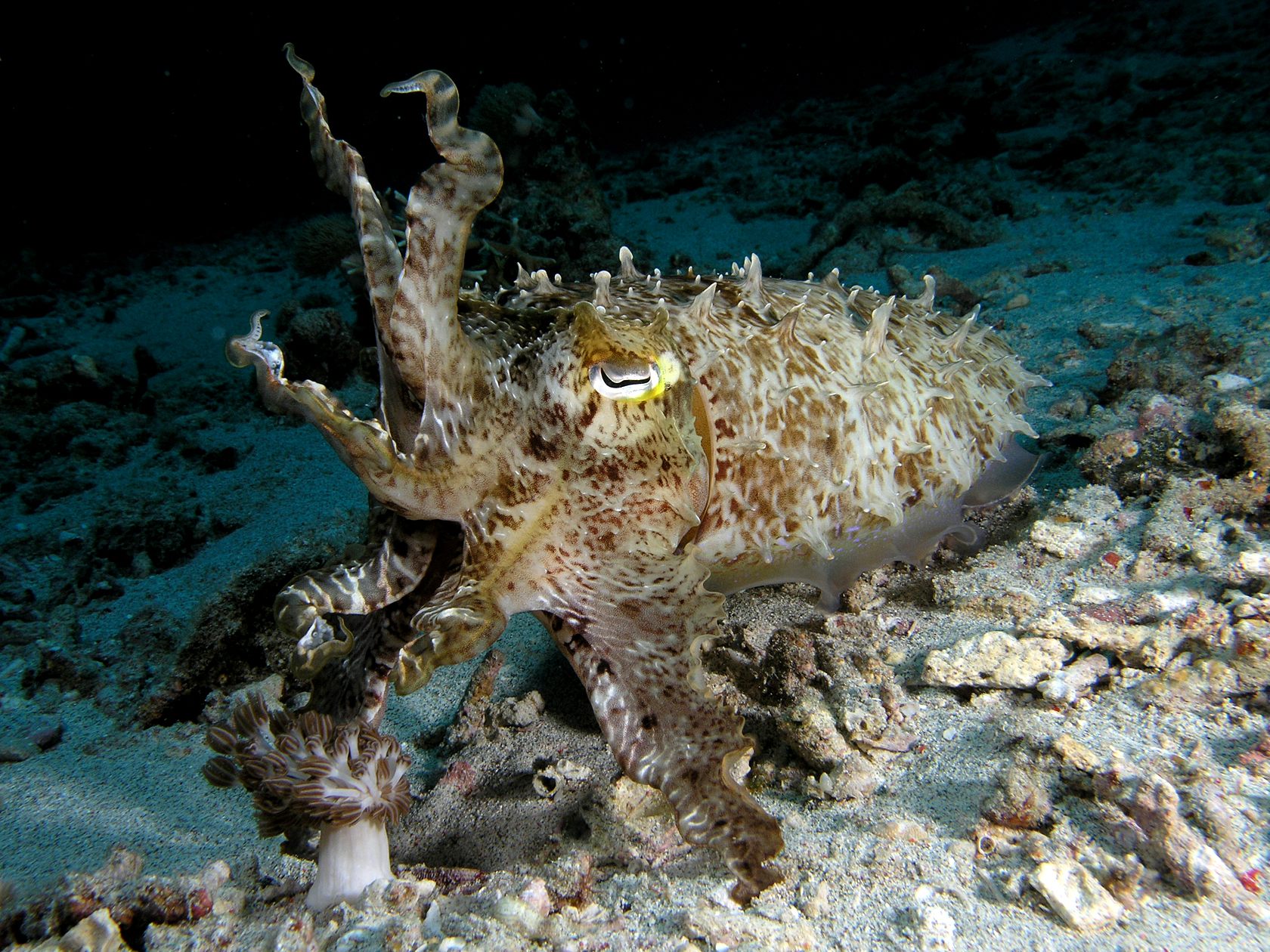Can Octopuses Teach Us How to Hide?
Some researchers think their skin holds the key to ducking infrared cameras.

Say you’re trying to go incognito. If it’s nighttime, you might try to blend into the inky background by wrapping yourself in dark clothes or a blanket. Maybe you’d be less visible to the naked eye, but you wouldn’t fool an infrared camera—that device picks up heat and longer wavelengths of light that human eyes can’t perceive. To devise camouflage that’s better able to evade these detectors, scientists are looking to cephalopods, masters of undersea disguise.
In addition to being clever engineers, octopuses, squids, and their cephalopod brethren are expert hiders. Researchers often turn to them for clues about how humans—and the technology we build—can perfect the art of vanishing from view. Last fall, backed by the U.S. Army Research Laboratory, a robotics team from the University of Pennsylvania and Cornell University took a cue from the way that octopuses and cuttlefish can quickly flex their papillae—the little bumps freckling their skin—to blend into a bumpy or spiky background. Now, a team of scientists at University of California, Irvine, has used cephalopod skin as a model for synthetic materials that can dodge infrared cameras.
Many cephalopods are able to change color in a flash by expanding or contracting clusters of cells on their skin. These include chromatophores, which contain pigments (black, brown, orange, red, or yellow). When the cells contract, pigment is less spread-out; that helps an animal blend into a light background. When they expand, the pigment is more visible. In a new paper in the journal Science, the UC Irvine researchers describe a way to engineer a manmade version that functions the same way.

The researchers devised a wrinkled, wavy membrane whose shape changes when an electric current courses through it. When the shape changes—similar to the expanding or contracting cells on a cephalopod’s skin—so too do the wavelengths of light that are reflected.
The scientists made a prototype in the shape of a squid. When they tinkered with its temperature and reflectance, the mimic successfully hid from the infrared camera. “Our artificial platforms translate many of the key natural capabilities of cephalopods from the visible to the infrared regions of the electromagnetic spectrum,” the researchers wrote.
This kind of technology has applications above the waves. Camouflage is a military advantage—and, someday, it may be used by average civilians dodging the surveillance systems that are proliferating on dry land and in the skies above.










Follow us on Twitter to get the latest on the world's hidden wonders.
Like us on Facebook to get the latest on the world's hidden wonders.
Follow us on Twitter Like us on Facebook